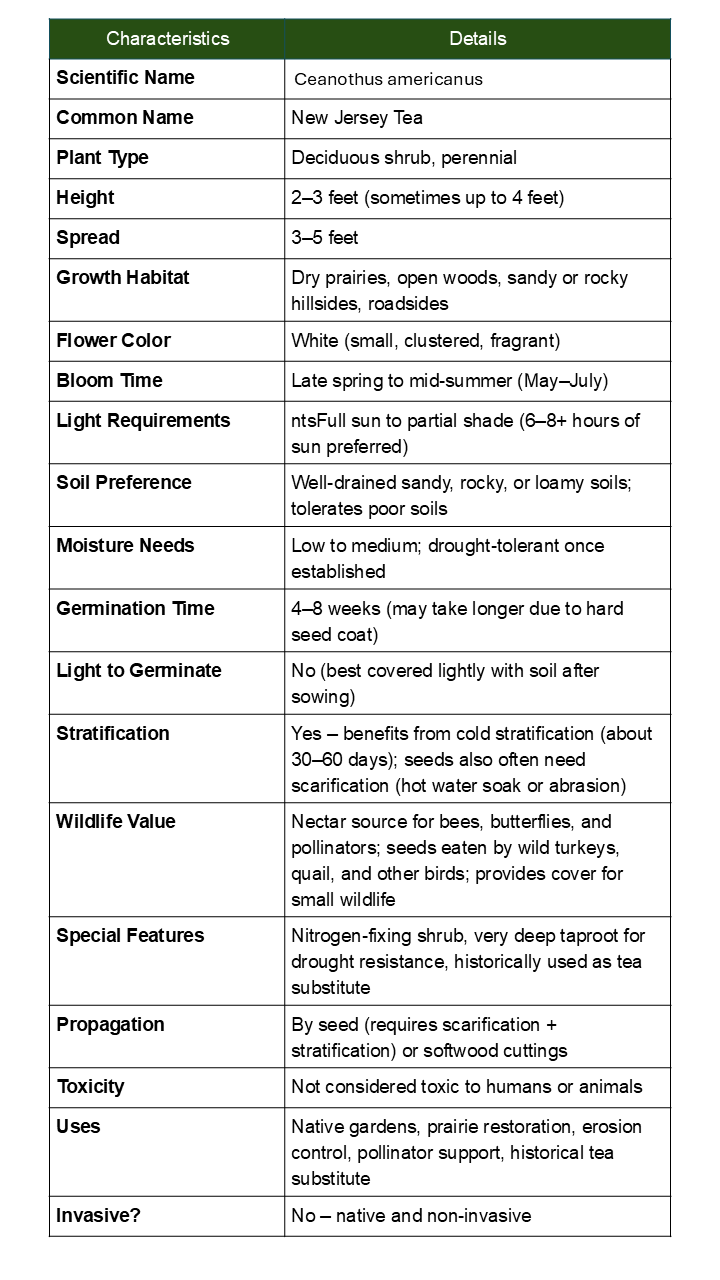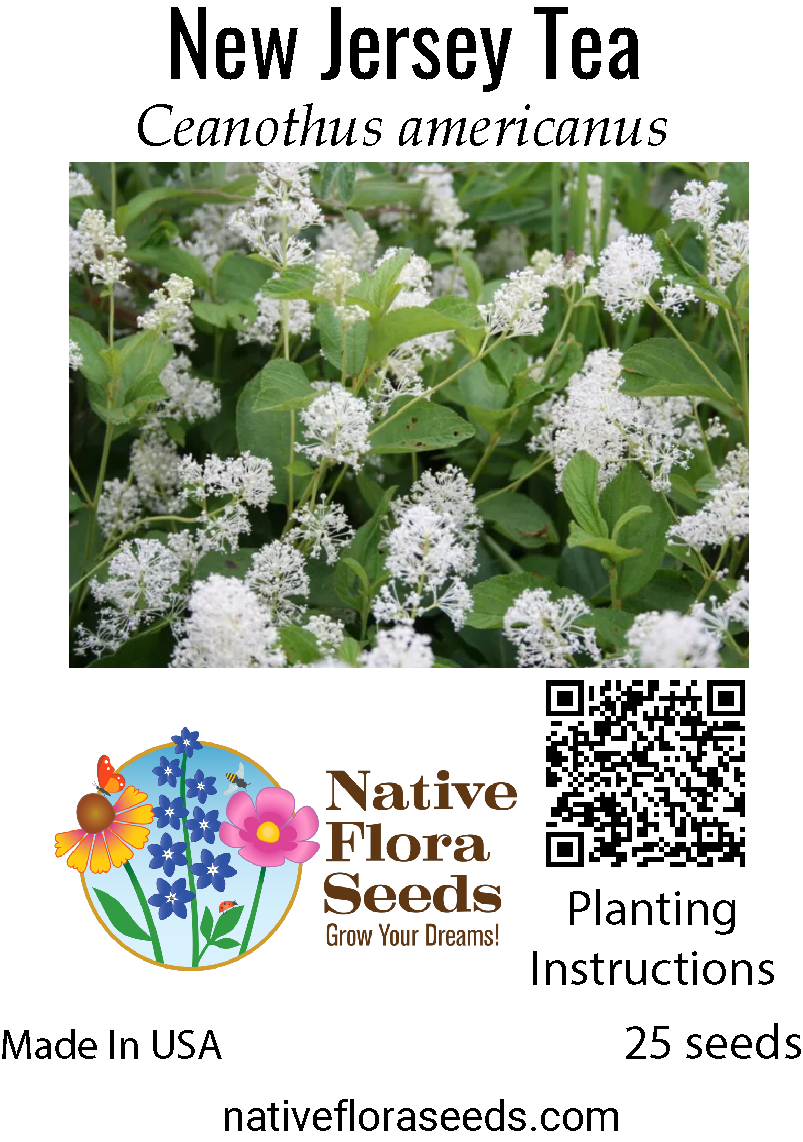New Jersey Tea Seeds - Native Shrub (Ceanothus americanus) for Wildlife Gardens
Regular price$4.00
/
Tax included.
No reviews
Description
🌿 Discover America's Historic Native Shrub
Experience the beauty and history of Ceanothus americanus, the remarkable native shrub that served as a tea substitute during the American Revolution. This hardy, low-growing deciduous shrub produces clusters of fragrant white flowers that create stunning displays in late spring to early summer while supporting vital native ecosystems.
✨ Key Features:
- Height: 2-3 feet tall with spreading habit
- Bloom Time: Late spring to early summer
- Flower Color: Clusters of small, fragrant white flowers
- Native Range: Eastern North America
- Hardiness: USDA Zones 4-8
- Sun Requirements: Full sun to partial shade
🦋 Outstanding Wildlife Benefits:
- Attracts wide variety of pollinators including native bees and butterflies
- Provides seeds and shelter for birds throughout the year
- Host plant for several butterfly species including spring azure
- Deep root system prevents soil erosion and improves soil health
- Essential component of native prairie and woodland edge ecosystems
🌱 Easy Growing Guide:
- Soil: Thrives in dry, sandy, or rocky soils - perfect for challenging sites
- Drought Tolerance: Exceptional once established due to deep taproot
- Maintenance: Low maintenance, naturally compact growth
- Germination: Scarification and cold stratification recommended
- Spacing: Plant 3-4 feet apart for natural groupings
🏛️ Historical Significance:
During the American Revolution, colonists dried and brewed the leaves as a patriotic alternative to imported tea, earning this plant its enduring common name.
Perfect for native gardens, prairie restorations, xeriscaping, and naturalized landscapes. This resilient shrub brings both beauty and ecological value to challenging growing conditions.


